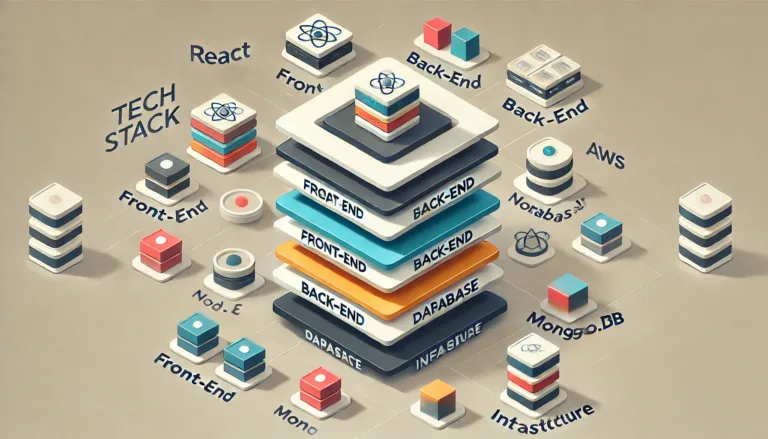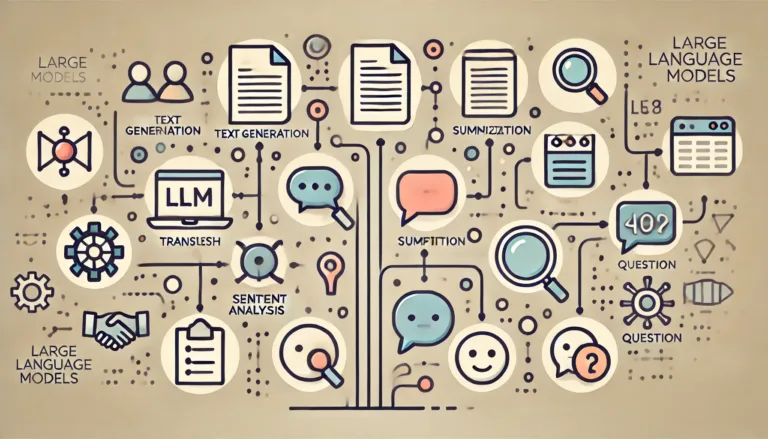Introduction
In the rapidly evolving world of technology, programming languages play a crucial role in defining how we interact with computers and build applications that power modern life. Among them, high-level programming languages have emerged as the cornerstone of software development due to their ease of use and versatility. Whether it’s creating dynamic websites, automating complex processes, or developing large-scale enterprise applications, high-level languages are designed to simplify the coding experience and make programming accessible to a broader audience.
What is a High-Level Programming Language?
High-level programming languages are designed to be closer to human language, using abstracted syntax and structures that are easier to read and write compared to low-level languages like Assembly or machine code. Unlike low-level languages, which require detailed management of hardware resources, high-level languages focus on allowing developers to express concepts and ideas more intuitively. This abstraction layer enables developers to write complex code more efficiently, without having to worry about intricate system details such as memory allocation or processor instructions.
By offering features like comprehensive libraries, automated memory management, and user-friendly syntax, high-level languages allow programmers to focus on “what” they want to achieve rather than the “how” of implementation. This fundamental shift makes high-level languages indispensable in scenarios where productivity, code readability, and maintainability are paramount.

Why Are High-Level Programming Languages Popular?
High-level languages have become a staple in software development due to several key factors:
- Readability: The syntax of high-level languages often mimics natural language, making code easier to read and understand. This reduces the learning curve for new developers and enhances collaboration among teams.
- Versatility: High-level languages are designed to support multiple programming paradigms (e.g., object-oriented, functional, and procedural), making them suitable for a variety of use cases ranging from web development to machine learning.
- Community Support: Most high-level languages have large, active communities that contribute to an ever-expanding ecosystem of tools, frameworks, and libraries. This support network accelerates development and problem-solving, providing resources for almost any technical challenge.
- Abstraction and Productivity: By abstracting away the complexity of lower-level operations, high-level languages enable developers to write, debug, and maintain code more efficiently. This increases overall productivity, especially for large projects.
The combination of these factors makes high-level programming languages an essential tool for modern developers, driving the development of software that is not only functional but also robust and scalable.
Understanding High-Level Programming Languages
What Makes a Language “High-Level”?
High-level programming languages are defined by several key attributes that distinguish them from their low-level counterparts. The primary factor that classifies a language as high-level is its level of abstraction—how far removed it is from the hardware-level operations and the intricacies of the underlying system. Instead of requiring detailed instructions for managing hardware resources, high-level languages allow developers to focus on logical constructs and functionalities.
Here are the core attributes that set high-level languages apart:
- Abstraction: High-level languages provide a layer of abstraction over machine-level instructions. Developers can work with complex data types, control structures, and functions without needing to handle hardware specifics like memory addresses or CPU registers.
- Memory Management: Automatic memory management is a hallmark of high-level languages. Features like garbage collection, built-in error handling, and dynamic memory allocation enable developers to avoid low-level memory leaks and bugs that are common in lower-level languages.
- Simplified Syntax: High-level languages are designed to be human-readable, often employing syntax and semantics that resemble natural language. This makes them accessible even to beginners and enhances code readability and collaboration.
- Built-in Functionalities: High-level languages come with comprehensive standard libraries and built-in functions that handle complex tasks, such as file manipulation, network communication, and advanced mathematical operations, all with a few lines of code.
These attributes make high-level languages ideal for quickly building sophisticated applications and systems without the need to worry about the nuances of the hardware they run on.
Benefits of Using High-Level Languages
High-level languages have gained popularity due to their numerous benefits, which include:
- Increased Developer Productivity: The simplified syntax, powerful libraries, and high abstraction level enable developers to write, debug, and maintain code faster. This is particularly beneficial in large-scale projects where time and efficiency are critical.
- Enhanced Error Handling: High-level languages often come equipped with robust error-handling mechanisms. Features such as exception handling, built-in testing frameworks, and automated debugging tools reduce the likelihood of crashes and unexpected behavior.
- Strong Community Support: Most high-level languages are backed by large, active communities. This ensures a wealth of resources such as documentation, tutorials, and libraries, making it easier for developers to find solutions and best practices for almost any problem they encounter.
The combination of these benefits makes high-level programming languages a popular choice for applications where readability, development speed, and ease of use are paramount.
Trade-offs Compared to Low-Level Languages
While high-level languages offer numerous advantages, there are certain trade-offs compared to low-level languages:
- Performance: High-level languages sacrifice some performance due to their abstraction layer and features like automatic memory management. This overhead can be significant in scenarios that require real-time processing or have strict performance constraints, such as operating system kernels or game engines.
- Limited Hardware Control: High-level languages abstract away many hardware-specific details, making them unsuitable for scenarios where direct hardware manipulation is needed. Tasks such as device driver development, system programming, or embedded systems often rely on low-level languages like C or Assembly for finer control.
- Larger Executable Size: Due to their complex runtime environments and extensive libraries, applications written in high-level languages can result in larger executable files compared to low-level counterparts.
In summary, while high-level languages excel in developer productivity and code clarity, low-level languages remain essential for scenarios that demand optimal performance, precise control over hardware, and minimal resource usage. Choosing between the two often depends on the specific requirements of the project at hand.

Overview of 8 Prominent High-Level Programming Languages
High-level programming languages vary widely in their design, use cases, and strengths. In this blog, we’ll explore eight of the most popular and impactful high-level languages in the tech landscape today. Each of these languages has carved out a unique niche in software development, catering to different types of projects and developer preferences.
Here’s a quick preview of the languages we’ll cover:
- Python: Celebrated for its simplicity and readability, Python is a versatile language that powers everything from web development to machine learning and data analysis.
- Java: Known for its robustness and cross-platform capabilities, Java is a go-to for large-scale enterprise applications and Android app development.
- JavaScript: The backbone of web development, JavaScript enables dynamic, interactive websites and has expanded its reach into mobile and server-side development.
- C#: A language developed by Microsoft, C# is popular for building Windows applications, web applications, and game development using the Unity engine.
- Ruby: With its elegant syntax, Ruby emphasizes productivity and simplicity, making it a favorite for rapid web development using the Ruby on Rails framework.
- Swift: Designed by Apple, Swift is used for building applications across the Apple ecosystem, offering a safe and performant environment for iOS and macOS development.
- PHP: A widely-used scripting language for web development, PHP is the backbone of many websites and content management systems like WordPress.
- Go (Golang): Known for its efficiency and strong concurrency support, Go is an excellent choice for cloud services, distributed systems, and command-line tools.
Each of these high-level languages has its own set of strengths and ideal use cases, making them powerful tools in the hands of skilled developers. In the following sections, we’ll take a closer look at the specific characteristics, benefits, and trade-offs of each language, helping you understand when and why to choose one over another.

4. Detailed Analysis of Each Language
4.1. Python
Python is a high-level, interpreted language known for its simplicity and readability. It uses a clean and straightforward syntax, which closely resembles natural English, making it an excellent language for both beginners and experienced developers. Python supports multiple programming paradigms, including procedural, object-oriented, and functional programming, providing flexibility for various types of projects.
Key Features:
- Easy-to-read syntax with minimal boilerplate code.
- Extensive standard library and third-party modules for a wide range of applications.
- Dynamic typing and automatic memory management.
- Support for procedural, object-oriented, and functional programming styles.
- Cross-platform compatibility.
Common Use Cases:
- Data Analysis and Machine Learning: Libraries like NumPy, pandas, and scikit-learn make Python a powerhouse for data science and AI.
- Web Development: Frameworks such as Django and Flask are popular for creating web applications.
- Automation and Scripting: Python is often used for automating repetitive tasks and building command-line utilities.
Pros and Cons:
- Pros:
- Easy to learn and use, even for beginners.
- Versatile with a rich ecosystem of libraries and frameworks.
- Highly readable code, making it ideal for collaboration and maintenance.
- Cons:
- Slower execution speed compared to compiled languages like Java and C++.
- Less suited for mobile app development.
- Dynamic typing can lead to runtime errors if not carefully managed.
Want to learn Python but you don’t have the time? Check out this article and see if you can learn it fast!
4.2. Java
Java is a class-based, object-oriented language designed to be platform-independent thanks to its “Write Once, Run Anywhere” (WORA) philosophy. It uses a virtual machine (JVM) to translate code into bytecode, which can be run on any system with a compatible JVM. This makes Java a reliable choice for building large-scale enterprise systems.
Key Features:
- Platform independence through the Java Virtual Machine (JVM).
- Strongly-typed language with a focus on robustness and security.
- Automatic memory management through garbage collection.
- Extensive standard library for networking, data structures, and concurrency.
- Support for multi-threading and concurrent programming.
Common Use Cases:
- Enterprise Systems: Java is widely used in enterprise environments for building large-scale applications and backend systems.
- Android App Development: Java was the primary language for Android app development before Kotlin.
- Web Applications: Frameworks like Spring and Hibernate are commonly used for building complex web applications.
Pros and Cons:
- Pros:
- Platform-independent and portable.
- Strong community support and mature ecosystem.
- High performance with just-in-time (JIT) compilation.
- Cons:
- Verbose syntax, which can lead to longer code.
- Higher memory consumption compared to some other languages.
- Slower startup times due to JVM initialization.
Want to learn Java but you don’t have the time? Check out this article and see if you can learn it fast!
4.3. JavaScript
JavaScript is the backbone of modern web development, enabling dynamic, interactive features on websites. Originally designed as a client-side scripting language, JavaScript has evolved into a full-stack language with the advent of Node.js, allowing it to run on both the client and server sides.
Key Features:
- Interpreted language that runs in the browser and on servers.
- Event-driven and asynchronous programming capabilities.
- Extensive libraries and frameworks (e.g., React, Angular, Vue.js).
- Prototypal inheritance model.
- Wide compatibility across all major browsers.
Common Use Cases:
- Front-End Web Development: Used to create interactive user interfaces with frameworks like React, Angular, and Vue.js.
- Server-Side Development: Node.js enables JavaScript to be used for server-side scripting.
- Mobile App Development: Frameworks like React Native allow JavaScript to be used for cross-platform mobile apps.
Pros and Cons:
- Pros:
- Ubiquity across web development—runs on every major browser.
- Can be used for both front-end and back-end development.
- Large ecosystem with countless libraries and frameworks.
- Cons:
- Lack of strong typing can lead to runtime errors.
- Browser inconsistencies can cause unexpected behavior.
- Rapidly evolving, which can lead to a steep learning curve for newcomers.
4.4. C#
C# is a modern, object-oriented language developed by Microsoft as part of the .NET ecosystem. It’s designed to be simple, powerful, and versatile, making it ideal for a variety of applications, especially on Windows platforms. C# is also widely used in game development through the Unity game engine.
Key Features:
- Strong typing and type-safety features.
- Full integration with the .NET framework, providing extensive libraries.
- Supports multi-threading and asynchronous programming.
- High performance with JIT compilation.
- Automatic memory management through garbage collection.
Common Use Cases:
- Desktop Applications: Primarily used for building Windows applications using the .NET framework.
- Game Development: Widely used in game development through Unity.
- Web Development: ASP.NET provides a powerful platform for building dynamic web applications.
Pros and Cons:
- Pros:
- Strongly-typed and easy to debug.
- Rich ecosystem with robust IDE support (Visual Studio).
- Excellent for building Windows and cross-platform applications.
- Cons:
- Best suited for Windows-based environments.
- Can be less flexible than dynamically-typed languages.
- Higher learning curve compared to some other languages.
4.5. Ruby
Ruby is a high-level, interpreted language that emphasizes simplicity and productivity. It’s known for its elegant syntax, which makes it easy to read and write. Ruby was designed to be enjoyable for developers, allowing them to express complex ideas with minimal code.
Key Features:
- Dynamic typing and duck typing.
- Extensive use of built-in methods and metaprogramming.
- Garbage collection for automatic memory management.
- Highly flexible with minimal constraints on programming styles.
- Emphasis on developer productivity.
Common Use Cases:
- Web Development: Ruby on Rails is a popular framework for building dynamic, database-driven web applications.
- Prototyping: Ruby’s simplicity and flexibility make it ideal for rapid prototyping.
- Automation Scripts: Often used for scripting and automating repetitive tasks.
Pros and Cons:
- Pros:
- Extremely readable and elegant syntax.
- Powerful metaprogramming capabilities.
- Excellent for rapid development and prototyping.
- Cons:
- Slower performance compared to statically typed languages.
- Limited use outside web development.
- Smaller community and fewer libraries compared to larger languages like Python.
4.6. Swift
Swift is a statically typed, compiled language developed by Apple, designed for building applications for iOS, macOS, and other Apple platforms. It combines the performance and efficiency of compiled languages with a modern syntax that is easy to read and write.
Key Features:
- Statically-typed with strong type inference.
- Memory safety and error handling built into the language.
- Concise and expressive syntax.
- Swift Playgrounds for interactive learning and prototyping.
- Full interoperability with Objective-C.
Common Use Cases:
- iOS and macOS Development: Building applications for Apple’s ecosystem, including iOS, macOS, watchOS, and tvOS.
- System Programming: Can be used for writing high-performance, low-level code.
- Cross-platform Development: Swift is gaining traction for cross-platform development through frameworks like SwiftUI.
Pros and Cons:
- Pros:
- High performance and safety features.
- Clean syntax that is easy to learn for new developers.
- Strong support from Apple and a growing community.
- Cons:
- Limited to Apple’s ecosystem.
- Smaller community compared to more established languages.
- Frequent updates that can cause breaking changes.
4.7. PHP
PHP is a server-side scripting language primarily used for web development. It is embedded within HTML, making it easy to add dynamic content to static web pages. PHP powers a significant portion of the web, including content management systems like WordPress.
Key Features:
- Open-source and easy to deploy.
- Embeddable within HTML for seamless integration.
- Strong support for various databases and web servers.
- Built-in security features for handling user input.
- Extensive documentation and community support.
Common Use Cases:
- Web Development: Server-side scripting for building dynamic websites.
- Content Management Systems: Powers popular platforms like WordPress and Joomla.
- E-commerce Platforms: Used for developing e-commerce sites like Magento.
Pros and Cons:
- Pros:
- Easy to learn and deploy.
- Strong integration with databases.
- Large community and extensive documentation.
- Cons:
- Security vulnerabilities if not coded carefully.
- Outdated practices are still prevalent in older projects.
- Limited use outside web development.
4.8. Go (Golang)
Go, or Golang, is a statically typed, compiled language developed by Google. It’s designed for simplicity, concurrency, and efficiency, making it an excellent choice for building scalable server-side applications and cloud services.
Key Features:
- Simplicity and minimalistic syntax.
- Strong support for concurrent programming through goroutines.
- Fast compilation and execution speed.
- Built-in garbage collection and memory safety.
- Extensive standard library for networking and file handling.
Common Use Cases:
- Cloud Services: Ideal for building cloud-native applications and microservices.
- Distributed Systems: Supports scalable, concurrent processing.
- Command-Line Tools: Popular for creating lightweight and efficient CLI applications.
Pros and Cons:
- Pros:
- High performance with minimal runtime overhead.
- Simplified syntax makes it easy to learn and write.
- Excellent for building scalable, concurrent applications.
- Cons:
- Lacks some advanced features found in other languages.
- Limited library support for complex tasks.
- No direct support for GUI applications.
5. Comparative Summary of the 8 Languages
| Language | Key Characteristics | Main Use Cases | Pros | Cons |
|---|---|---|---|---|
| Python | Simple, readable, multi-paradigm support | Data analysis, machine learning, web development | Easy to learn, extensive libraries, versatile | Slower execution, not ideal for mobile apps |
| Java | Class-based, object-oriented, platform-independent | Enterprise systems, Android apps, large-scale web apps | Strong community, cross-platform, high performance | Verbose syntax, higher memory usage |
| JavaScript | Interpreted, event-driven, runs on both client and server-side | Web development, mobile apps, dynamic websites | Ubiquity in web, versatile, extensive frameworks | Browser inconsistencies, lack of strong typing |
| C# | Strong typing, .NET integration, multi-paradigm | Windows apps, game development (Unity), web apps | Rich libraries, powerful IDEs, cross-platform with .NET Core | Best suited for Windows, steeper learning curve |
| Ruby | Dynamic, elegant syntax, highly readable | Web development (Ruby on Rails), prototyping, scripting | Readable syntax, great for rapid development | Slower performance, limited to web-focused use cases |
| Swift | Statically-typed, safe, optimized for Apple platforms | iOS/macOS apps, system programming, cross-platform apps | High performance, modern syntax, strong safety features | Limited to Apple ecosystem, smaller community |
| PHP | Open-source, embeddable, server-side scripting | Web development, CMS, e-commerce | Easy to learn, strong integration with HTML and databases | Security vulnerabilities, limited modern use |
| Go (Golang) | Compiled, efficient, strong concurrency support | Cloud services, distributed systems, command-line tools | Fast execution, minimal syntax, scalable concurrency | Fewer advanced features, limited libraries for complex apps |
This table serves as a quick reference for comparing these high-level languages based on their key attributes, typical use cases, and pros and cons, helping readers make informed decisions based on project needs and development priorities.

6. Choosing the Right Language for Your Project
Selecting the right programming language is crucial to the success of any project. The choice should be guided by several key factors, including the type of project, performance needs, and available resources. Here’s a guide to help you navigate the decision-making process:
Factors to Consider:
1. Project Type:
- Web Development: Languages like JavaScript and PHP are optimal for building dynamic websites and web applications. JavaScript is a must-have for front-end interactivity, while PHP is widely used for server-side scripting and content management systems.
- Mobile App Development: For mobile applications, Swift is ideal for iOS, and Java or Kotlin are preferred for Android development. JavaScript (with frameworks like React Native) can also be used for cross-platform apps.
- Data Science and Machine Learning: Python is the go-to language due to its extensive libraries like TensorFlow and pandas. It provides powerful tools for data manipulation, statistical modeling, and AI.
- Game Development: C# is a popular choice when using the Unity engine for cross-platform game development, while C++ is used for high-performance, resource-intensive games. If you are curious about C++, you can check this article also.
- Enterprise Applications: Java remains a strong contender for building robust, scalable enterprise solutions with complex backend systems.
- System Programming and Cloud Services: Go is highly efficient for building scalable cloud-native applications, while C is better suited for low-level system programming.
2. Language Learning Curve:
- Beginner-Friendly: Languages like Python and JavaScript have a gentle learning curve due to their straightforward syntax and active communities, making them ideal for new developers.
- Advanced: Languages like C# and Java can be more challenging to learn due to their extensive libraries and strict typing, but offer powerful features for experienced programmers.
3. Performance Requirements:
- Speed and Efficiency: For projects where speed and performance are critical (e.g., gaming, real-time systems), compiled languages like C#, Java, and Go outperform interpreted languages.
- Memory Management: Languages like Go and Swift have built-in features for memory safety and management, making them suitable for performance-sensitive applications.
4. Community Support and Libraries:
- Availability of Resources: The strength of a language’s community determines the availability of tutorials, frameworks, and support. Python, Java, and JavaScript have large, active communities, ensuring a wealth of resources for troubleshooting and learning.
- Specialized Libraries: Choose a language with libraries tailored to your needs. For example, Python offers specialized libraries for data science, while JavaScript has robust frameworks for UI development.
Recommendations:
- For Web Development:
- Front-End: JavaScript (React, Angular, Vue.js) is indispensable for interactive user interfaces.
- Back-End: Node.js (JavaScript) for a unified stack, or PHP for server-side scripting in content-driven websites.
- For Mobile Development:
- iOS: Swift is the clear choice for native iOS apps.
- Android: Java or Kotlin are standard for Android development.
- Cross-Platform: Use JavaScript with React Native for building apps that run on both iOS and Android.
- For Data Science and Machine Learning:
- Python is unmatched due to its libraries like scikit-learn, NumPy, and TensorFlow.
- For Enterprise Applications:
- Java is a proven language for building large-scale, secure, and reliable enterprise systems.
- For Game Development:
- C# is ideal for Unity-based development, while C++ is suitable for high-performance games requiring fine-grained control.
- For Cloud Services and Microservices:
- Go is the language of choice for building lightweight, scalable microservices and cloud-native applications.
Matching the right language to your project can significantly enhance development efficiency and project success. With these factors and recommendations in mind, you can confidently select a language that aligns with your project’s goals and technical needs.
7. Conclusion
High-level programming languages have revolutionized the way we develop software, making it possible to build complex applications with greater ease and efficiency. Their abstraction, readability, and extensive libraries have enabled developers to focus on solving real-world problems rather than getting bogged down by low-level system details. From creating dynamic websites to developing robust enterprise systems and groundbreaking AI models, high-level languages are a cornerstone of modern software development.
Choosing the right language for a project isn’t just about following trends; it’s about aligning the language’s strengths with your project’s specific needs. Whether you’re a beginner picking up Python for its simplicity or an experienced developer leveraging Java for a large-scale enterprise application, each language has a unique set of features that can elevate your project. Remember, no single language is perfect for every scenario—success lies in understanding your goals and selecting the right tool for the job.
The best way to truly grasp the nuances of these languages is to experiment. Pick a language that aligns with your interests or project goals, dive into its documentation, and try building a few small projects. This hands-on experience will deepen your understanding and help you discover which language resonates most with your style and needs.
Ready to get started? Choose a language from the ones discussed, explore its community, and see where it takes you. Happy coding!
References
- Ellow.io: High-Level Programming Languages
- Computer Science Wiki: Higher-Level and Lower-Level Languages
- Northeastern University: Most Popular Programming Languages
- Simplilearn: Best Programming Languages to Start Learning Today
- DevJobs Scanner: Top 8 Most Demanded Programming Languages
- Turing.com: In-Demand Programming Languages to Learn
- Appetiser: High-Level Programming Language Glossary
These references provide further reading for anyone interested in exploring more about high-level programming languages and their use cases.
FAQ
1. What is the difference between high-level and low-level programming languages?
High-level programming languages are designed to be more abstract, focusing on readability, ease of use, and productivity. They hide the complexities of hardware-level operations, making them easier for developers to work with. Low-level languages, like Assembly or C, provide more control over system resources but are more complex and harder to write, as they are closer to machine code.
2. Which high-level language should I start with as a beginner?
For beginners, Python is an excellent starting point due to its simple syntax and strong community support. It allows newcomers to focus on learning programming concepts without getting overwhelmed by complicated syntax. Other beginner-friendly options include JavaScript, especially for those interested in web development.
3. Are high-level languages slower than low-level languages?
Generally, high-level languages can be slower than low-level languages because of the additional abstraction layers and automatic memory management. However, they make up for this with faster development times, easier debugging, and better code maintainability. For most applications, the performance trade-off is worth the increased productivity and ease of use.
4. Can I use multiple high-level languages in a single project?
Yes, it’s common to use multiple high-level languages within a single project. For example, in a web application, JavaScript might be used for the front-end, while Python or Java handles the back-end logic. This multi-language approach allows developers to leverage the strengths of each language in different parts of the project.
5. What are some good resources for learning high-level programming languages?
For learning high-level programming languages, consider using platforms like Codecademy, FreeCodeCamp, and Coursera for interactive courses. Documentation sites like Python.org, JavaScript.info, and Swift.org also provide comprehensive guides and tutorials. Additionally, community platforms like Stack Overflow and language-specific forums are great places to seek help and guidance.









